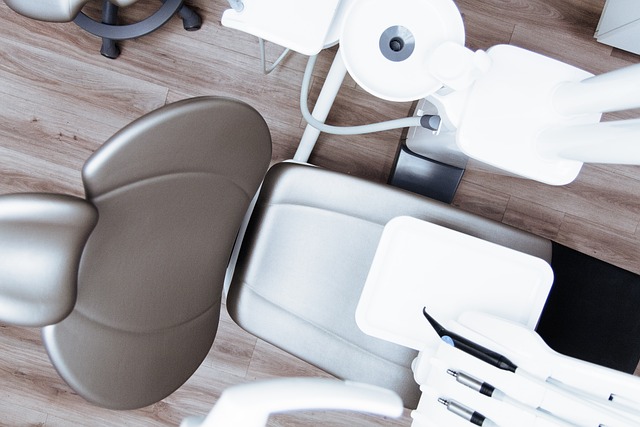Invisalign vs. Braces: Unraveling the Speedy Smiles Debate
Welcome to the world of orthodontics, where patients have more choices than ever to achieve that perfect smile. If you or your loved ones are considering straightening your teeth, you might have stumbled upon a debate on Invisalign vs. braces. Fret not, for today we are here to unravel this speedy smiles discussion and help you make an informed decision. Both Invisalign and braces have their unique advantages, and we’ll delve into the specifics of each option, allowing you to understand the differences and find the best solution tailored to your needs. So let’s embark on this journey together and discover which path leads to the smile of your dreams!
1. Understanding the Invisalign vs. Braces Debate: Which is Right for You?
Choosing between Invisalign and braces can be a tough decision, but understanding the differences between the two can help you make an informed choice. Here are a few key factors to consider when deciding which option is right for you:
1. Appearance:
One of the main advantages of Invisalign is that it offers a more discreet option for straightening your teeth. The clear aligners are nearly invisible, allowing you to improve your smile without feeling self-conscious. On the other hand, braces are more noticeable as they consist of metal brackets and wires. However, some people see braces as a fashion statement and embrace the opportunity to express their personality with colorful brackets or bands.
2. Convenience:
Invisalign offers a greater level of convenience, as the aligners can be easily removed for eating, brushing, and flossing. This means there are fewer dietary restrictions compared to braces. With braces, you need to avoid certain foods that can damage the brackets or wires. However, wearing braces requires less responsibility since the aligners can be easily misplaced or lost, whereas braces are permanently fixed to your teeth.

2. Introducing Invisalign: A Modern Approach to Straightening Teeth
Invisalign is a revolutionary dental treatment that offers a modern and discreet approach to straightening teeth. This innovative system uses a series of custom-made clear aligners, designed specifically for each individual, to gradually shift the teeth into their desired position.
So, what makes Invisalign different from traditional braces? Firstly, the aligners are virtually invisible, making them an appealing option for those who want to maintain a natural appearance during their orthodontic treatment. In addition, the aligners are removable, which means you can easily take them out for eating, brushing, and flossing, allowing for improved oral hygiene. Unlike traditional braces, there are no restrictions on the type of food you can enjoy, as you simply remove the aligners and eat as usual. Lastly, Invisalign aligners are known for their comfort, as they are made from smooth, BPA-free plastic that won’t cause irritation or discomfort to your gums and cheeks.

3. Traditional Braces: Tried and True, but Are They Right for You?
Traditional braces have been a popular orthodontic treatment for many years, and for good reason. They have been tried and true in correcting various bite and alignment issues, leaving countless patients with beautiful, straight smiles. However, before deciding if traditional braces are the right choice for you, it’s important to consider a few key factors.
Firstly, traditional braces are highly effective in treating even the most complex orthodontic problems. Whether you have overcrowded teeth, large gaps, or a misaligned bite, braces can successfully address these issues. They consist of metal brackets that are attached to each tooth, which are then connected by archwires. Over time, the wires are adjusted to gradually shift your teeth into their desired positions.
Another benefit of traditional braces is that they allow for precise control over tooth movement. With braces, your orthodontist has the flexibility to make adjustments at each visit to ensure your teeth are moving correctly. Additionally, they can be combined with other orthodontic appliances, such as elastics, to enhance the effectiveness of the treatment.

4. The Speedy Smiles Battle: Comparing Treatment Duration of Invisalign and Braces
When it comes to straightening your teeth, the two most popular options are Invisalign and traditional braces. One of the main factors people consider when choosing between these treatments is the duration of the treatment. In this section, we will compare the treatment duration of both Invisalign and braces, and help you make an informed decision.
Invisalign:
If you’re looking for a faster orthodontic treatment, Invisalign might be the right option for you. The average treatment time for Invisalign ranges from 6 to 18 months, depending on the complexity of your case. However, it’s important to note that every individual is unique, and your treatment duration might vary.
- Removable aligners: Invisalign aligners can be removed for eating, drinking, and special occasions, providing you with flexibility and convenience.
- No food restrictions: With Invisalign, you can enjoy your favorite foods without worrying about food restrictions that come with traditional braces.
- Smoother experience: Invisalign generally causes less discomfort and mouth irritation compared to braces, as they have no wires or brackets.
Braces:
Traditional braces have been used for decades and are highly effective in straightening teeth. The average treatment time for braces ranges from 12 to 36 months. While this may seem longer than Invisalign, it’s important to consider the benefits that braces offer.
- Treats complex cases: Braces are suitable for treating more severe orthodontic issues like overbite, underbite, and crossbite, which might require a longer treatment duration.
- No responsibility for daily wear: Unlike Invisalign, braces are fixed onto your teeth, so there’s no concern about losing or misplacing the aligners.
- No temptation to skip treatment: Since braces are a fixed appliance, you won’t have the temptation to remove them, ensuring consistent treatment progress.
Remember, the duration of your orthodontic treatment will ultimately depend on your unique needs and goals. Consulting with a dental professional is crucial to determine the best option for your individual case.

5. Say Goodbye to Metal Mouth: The Aesthetics of Invisalign and Braces
If you’ve been longing for a straighter smile but dread the thought of metal braces, then Invisalign could be the answer you’ve been searching for. Invisalign is a revolutionary orthodontic treatment that will help you achieve the smile you’ve always wanted, without the cumbersome metal brackets and wires.
With Invisalign, you can say goodbye to “metal mouth” and hello to a discreet and comfortable orthodontic solution. The treatment utilizes a series of clear aligners made from smooth, BPA-free plastic that are custom-made to fit your teeth. These aligners are virtually invisible when worn, allowing you to straighten your teeth without anyone even noticing.
- Compliance: Unlike traditional braces, Invisalign aligners are removable, making it easier to maintain proper oral hygiene and enjoy your favorite foods without any restrictions.
- Comfort: The aligners are made of a smooth material, eliminating the discomfort and irritation often associated with metal braces.
- Efficiency: Invisalign aligners are designed to gradually shift your teeth into place, ensuring effective and precise results.
Whether you have crowded teeth, gaps, or misalignments, Invisalign offers a discreet and effective solution to help you achieve the smile of your dreams. Say goodbye to metal mouth and embrace the aesthetics of Invisalign!
6. Aligners On-the-Go: Discover the Convenience of Invisalign
With Invisalign, you bring convenience and flexibility to your orthodontic treatment. No more worrying about bulky braces or rubber bands – Invisalign’s aligners are virtually invisible, making it easier to maintain your regular activities while straightening your teeth. Whether you have a busy lifestyle or plan to travel, Invisalign has got you covered.
One of the key advantages of Invisalign is its removability. Unlike traditional braces, you can easily remove the aligners when you need to eat, drink, brush, or floss. This means you can continue to enjoy your favorite foods without restrictions or needing to navigate around brackets. Plus, cleaning your teeth is a breeze – simply take out the aligners and brush and floss as usual!
- No discomfort from metal wires or brackets
- No restrictions on what you can eat or drink
- Removable aligners for easy oral hygiene
- Convenient for busy individuals or frequent travelers
Wearing Invisalign aligners allows you to stay confident and maintain your natural smile throughout the treatment. They are crafted to fit your teeth snugly while minimizing any discomfort. In addition, there are no adjustments necessary, unlike with traditional braces. You will simply switch to a new set of aligners approximately every two weeks, gradually shifting your teeth into the desired position.
Experience the convenience and freedom of Invisalign – the modern approach to achieving the smile you’ve always wanted!
7. Embracing the Brace Face: Navigating the Lifestyle of Traditional Braces
Traditional braces are an important part of many people’s lives, and although they may seem daunting at first, with the right approach and mindset, they can become a unique and exciting lifestyle. Embracing the brace face is all about finding joy in this journey towards a perfect smile. Here are some tips to help you navigate the lifestyle of traditional braces:
1. Embrace the journey: Remember that your braces are only temporary, but the results will last a lifetime. Embrace this chapter of your life as an opportunity for self-improvement and growth.
2. Follow your orthodontist’s instructions: Your orthodontist is your partner in this journey, so make sure to follow their instructions religiously. They will guide you on proper oral hygiene, diet restrictions, and wearing time for your braces. Trust their expertise!
3. Find your style: Braces can be an excellent opportunity to experiment with new looks and show off your unique personality. Choose colorful elastics or go for a more discreet look by opting for ceramic brackets. Embrace your inner fashionista by accessorizing your braces with fun and vibrant colors!
4. Maintain a proper oral hygiene routine: Good oral hygiene is crucial when wearing braces. Brush after every meal, floss daily, and use interdental brushes to remove any food debris. A clean and healthy mouth will help prevent any potential issues during your orthodontic treatment.
5. Watch your diet: While wearing traditional braces, it’s important to avoid certain foods that can damage your brackets or wires. Say no to sticky candies, popcorn, and hard-to-chew snacks. Stick to a braces-friendly diet, which includes soft fruits, vegetables, and foods that are easy to eat.
Remember, your journey with traditional braces doesn’t have to be a burden. Embrace the process, follow your orthodontist’s guidance, and make the most of this unique chapter in your life. Before you know it, your braces will be off, and you’ll be left with a stunning smile that you can proudly show off!
8. Oral Hygiene Matters: How Invisalign and Braces Impact Dental Care
When it comes to maintaining good oral hygiene, it’s important to consider how orthodontic treatments like Invisalign and braces can impact your dental care routine. Both Invisalign and braces work towards aligning your teeth for a straighter smile, but they require slightly different approaches to oral hygiene. Proper care is crucial to prevent any complications and ensure a healthy mouth throughout your orthodontic treatment.
Here are some tips to keep your teeth and gums healthy while wearing Invisalign or braces:
- Brush Regularly: Brush your teeth thoroughly – at least twice a day, and after each meal if possible. Pay extra attention to cleaning around the brackets and wires of your braces, or make sure to clean your Invisalign trays properly.
- Floss Diligently: Flossing becomes a bit trickier with braces, but it’s crucial to remove any plaque or food particles between your teeth and wires. If you’re wearing Invisalign, remove the trays before flossing and clean both your teeth and the trays before putting them back in.
- Eat a Balanced Diet: Avoid sticky, hard, and sugary foods that can damage braces or get stuck in Invisalign trays. Opt for nutritious foods that are gentle on your teeth and braces or trays.
By following these simple guidelines, you can maintain good oral hygiene throughout your orthodontic treatment, ensuring a healthy and beautiful smile once your braces or Invisalign journey is complete. Remember, regular visits to your orthodontist and dentist are also essential to monitor the progress of your treatment and address any concerns that may arise.
9. The Cost Factor: Comparing the Price of Invisalign vs. Braces
When it comes to straightening your teeth, cost is often a major consideration. If you’re debating between Invisalign and traditional braces, understanding the price difference between the two can help you make an informed decision. While the cost of treatment can vary depending on various factors such as the complexity of your case and the duration of the treatment, here’s a breakdown of the general price comparison between Invisalign and braces.
Invisalign:
- Invisalign typically costs between $3,000 and $8,000 for a complete treatment. This price may include aligner trays, consultations, and retainers.
- The total cost of Invisalign can vary depending on the number of aligners you need and the length of your treatment. Mild to moderate cases tend to be less expensive than severe orthodontic issues that require more extensive treatment.
- Some dental insurance plans cover a portion of the Invisalign treatment cost, making it more affordable for some patients. It’s always a good idea to check with your insurance provider to see if you have coverage.
Braces:
- Traditional metal braces typically range from $2,000 to $7,000 for a complete treatment. This includes the cost of brackets, wires, monthly adjustments, and retainers.
- Like Invisalign, the total cost of braces can vary depending on the complexity of your case and the amount of time needed to achieve the desired result.
- Many dental insurance plans also offer coverage for braces. However, it’s important to note that insurance coverage for orthodontic treatment may have age limits or waiting periods, so be sure to check with your provider for details.
Ultimately, determining the overall cost will require a consultation with an orthodontist who will evaluate your specific needs and provide a personalized treatment plan. Keep in mind that while cost is an important factor, it’s also essential to consider the treatment effectiveness, comfort, and convenience when deciding between Invisalign and braces.
10. Consulting with an Orthodontist: Choosing the Right Treatment for Your Smile
When it comes to improving your smile, consulting with an orthodontist is a crucial step in the process. With the help of an expert in orthodontic treatments, you can choose the right treatment plan that will transform your smile and boost your confidence. Here are some key factors to consider when choosing the right treatment:
- Evaluation: The first step is a comprehensive evaluation of your teeth, jaw, and overall oral health. This allows the orthodontist to assess your specific needs and recommend the most suitable treatment options for you. They will consider factors such as the alignment of your teeth, bite issues, overcrowding, and any existing dental conditions.
- Treatment Options: Orthodontists offer a wide range of treatment options to address different dental issues. These may include traditional braces, clear aligners, retainers, or other innovative appliances. Your orthodontist will explain the benefits and limitations of each option, considering your lifestyle, personal preferences, and treatment goals.
While traditional braces are known for their effectiveness, modern treatments like clear aligners offer a more discreet and comfortable option. Invisalign, for example, is a popular choice among adults and teens as it straightens teeth using a series of virtually invisible aligners. It’s important to discuss these alternatives with your orthodontist, who will guide you in making an informed decision based on what is best for your smile.
Frequently Asked Questions
Q: What is the main difference between Invisalign and braces?
A: The main difference between Invisalign and braces is that Invisalign uses a series of clear aligners, while braces consist of brackets and wires fixed to your teeth.
Q: Are there any advantages to choosing Invisalign over braces?
A: Absolutely! Invisalign offers several advantages over traditional braces. Firstly, the aligners are virtually invisible, providing a more discreet orthodontic treatment option. Additionally, Invisalign aligners can be removed when eating or brushing, allowing for greater flexibility and ease of maintaining oral hygiene compared to braces.
Q: What are the benefits of braces over Invisalign?
A: Braces have been used for many years and have proven to be highly effective in treating more complex orthodontic cases. They allow for more precise control over tooth movement, particularly when addressing issues involving bite alignment or severe misalignment.
Q: Which treatment option is generally faster, Invisalign or braces?
A: While the duration of orthodontic treatments varies from case to case, Invisalign is often considered to be faster than traditional braces. Invisalign utilizes modern technology, such as computer-aided design, to map out a precise treatment plan, helping to achieve desired results in a shorter time frame compared to braces.
Q: Do Invisalign aligners require frequent adjustments like braces?
A: Invisalign aligners are designed to gradually move your teeth into alignment over time. Unlike braces that require regular adjustments by an orthodontist, Invisalign typically involves changing aligners every one to two weeks, as directed by your orthodontist. This eliminates the need for frequent in-office visits for adjustments.
Q: Are there any dietary restrictions when using Invisalign or braces?
A: With braces, certain foods like hard candies, popcorn, or sticky sweets should be avoided to prevent damaging the brackets or wires. On the other hand, Invisalign aligners can be easily removed before eating, allowing you to enjoy all your favorite foods without restrictions.
Q: Do Invisalign and braces cause discomfort during treatment?
A: Both Invisalign and braces may cause some discomfort initially as your teeth adjust to the pressure applied to them. However, many patients find Invisalign aligners more comfortable to wear, as they do not have any protruding hardware that may irritate the mouth like braces.
Q: Will insurance cover the cost of Invisalign or braces?
A: Insurance coverage for orthodontic treatment varies depending on your specific plan. However, most dental insurance plans cover a portion of the cost of braces, while Invisalign may be partially covered if deemed medically necessary. It’s essential to check with your insurance provider to understand the coverage details.
Q: Which treatment is better suited for adults – Invisalign or braces?
A: Invisalign has become increasingly popular among adults due to its discreet appearance and convenience. It allows adults to undergo orthodontic treatment without drawing unwanted attention to their teeth. However, the choice between Invisalign and braces ultimately depends on the individual’s unique orthodontic needs, which can be evaluated by an orthodontist.
Q: How can I determine whether Invisalign or braces are right for me?
A: It’s crucial to consult a qualified orthodontist who can assess your specific dental needs. They will conduct a comprehensive examination, including X-rays and digital scans, to determine the best treatment plan for you. They will consider factors such as the complexity of your case, your lifestyle, and your personal preference to help you make an informed decision about Invisalign or braces.
Conclusion
In conclusion, the decision between Invisalign and braces ultimately comes down to your unique smile journey. Both options offer effective solutions in achieving the straight, confident smile you deserve.
If you prioritize flexibility, ease of use, and an aesthetically pleasing appearance, Invisalign might be the ideal choice for you. With its nearly invisible design and removable aligners, Invisalign allows you to straighten your teeth discreetly while enjoying your favorite foods and maintaining good oral hygiene.
On the other hand, braces are a trusted and time-tested orthodontic treatment that guarantees excellent results. If you don’t mind having a more noticeable appliance attached to your teeth, braces provide precise tooth movements for a predictable outcome.
Remember, the speed of your smile transformation is influenced by various factors such as the complexity of your case, your compliance with treatment guidelines, and your dentist’s expertise. Therefore, it’s crucial to consult with a skilled orthodontist who will guide you through the decision-making process and customize a treatment plan tailored to your needs.
Ultimately, whether you choose Invisalign or braces, what truly matters is the positive impact these options will have on your self-confidence and oral health. So, take the first step towards a beautiful smile by scheduling a consultation with an orthodontist and embark on your journey towards a happier, healthier you.





